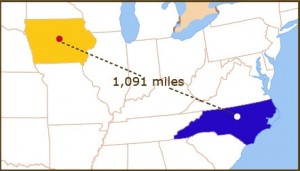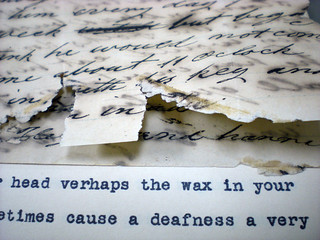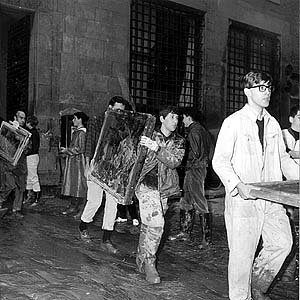 It is with great sadness that we report the passing of one of the greats in our field, Jan Merrill-Oldham. Jan passed away peacefully at home on October 5th.
It is with great sadness that we report the passing of one of the greats in our field, Jan Merrill-Oldham. Jan passed away peacefully at home on October 5th.
As one colleague put it, “she was a force of nature.” Jan’s influence stretched across generations of preservation librarians and shaped what we know today as modern library and archives preservation practice.
Many stories will be told in the next few days of Jan’s perseverance, dedication, humor and humility. I have many stories myself, and will remember many more as I reflect on her life. The one thing I will always remember about Jan is her willingness to lend an ear even when she, herself, was going through a very difficult time. Jan loved life and she loved her work. She was one of the most dedicated people I know and I’m so thankful to her, and indeed to so many, for taking me under her wing. She will be sorely missed, but we will celebrate her life and then get back to work (and life) because that is what she would have wanted us to do.
Obituary for Jan Merrill-Oldham
Jan Merrill-Oldham died peacefully at her home in Cambridge, Massachusetts on October 5th 2011 . She is survived by her husband Peter Merrill-Oldham of Cambridge, her mother and father, Alice Cecarelli Merrill and James Hershy Merrill of Milford, CT, and her brother James Wallace Merrill of West Haven, CT.
Janice Elaine Merrill was born on May 10, 1947 in Milford Connecticut and lived there until she went to college, spending most of her summers with her grandparents Ed and Esther Trask in East Sumner, ME. She graduated from Jonathan Law High School in Milford in 1965 and from the University of Connecticut in Storrs in 1969. She married Peter Oldham in 1976 in Ashford, CT, and in 1978 they changed their last names to Merrill-Oldham.
As the Malloy-Rabinowitz Preservation Librarian at Harvard University, Jan directed the Weissman Preservation Center in the Harvard University Library and the Preservation & Imaging Services Department in the Harvard College Library from November 1995 to February 2010. She created and administered a comprehensive program to preserve and enhance access to the 16.5 million volumes and extensive special collections and archives held in Harvard’s more than 70 libraries.
Jan became interested in the preservation of library collections while working in the bindery at the University of Connecticut Library. In 1979, a National Endowment for the Humanities fellowship at the Yale University Library allowed Jan to undertake formal training in library and archives preservation. She went on to earn a Masters in Library Science from the University of Rhode Island and to establish the University of Connecticut Libraries’ Preservation Department.
Over the course of 30 years, Jan became a recognized national and international leader in the field of library and archives preservation. Eager to learn and insatiably curious, she was an extraordinary teacher, mentor, author and administrator. Early on, her vision for libraries led her to move beyond the work of simply preserving collections to reformatting them for access via the Internet. Jan exercised her formidable powers of persuasion with university administrators, commercial suppliers, and by serving on key committees within the American Library Association (ALA), the Association of Research Libraries, the Council on Library and Information Resources, the National Information Standards Organization and many others. She authored and edited more than 40 publications.
Jan’s powerful influence within her profession was widely recognized. In 2011, the Association of Collections and Technical Services (ALCTS) and the Preservation and Reformatting Section (PARS) of ALA created a professional development grant in her honor. She also received the ALA/ALCTS Ross Atkinson Lifetime Achievement Award (2011), the ALA/PARS Banks Harris Award (1994), a University of Connecticut Distinguished Service Award (1994) and the ALA/PARS Esther Piercy Award (1990).
Jan was one of those rare people who not only changed her profession but also the lives of the many family members, friends and colleagues who came to love and respect her. A memorial ceremony will be held at the Mount Auburn Cemetery in Cambridge, Massachusetts on Saturday October 15the at 1 pm in the Storey Chapel, followed by a reception celebrating her life at Pete and Jan’s home in Cambridge.
In lieu of flowers, donations in Jan’s memory may be made to the Circle of Caring at Hospice of the Good Shepherd 617.969.6130
 This week will be your last opportunity to see our exhibit “What’s Missing From Your Video History” sponsored by the Preservation Department and the Digital Scholarship and Production Services.
This week will be your last opportunity to see our exhibit “What’s Missing From Your Video History” sponsored by the Preservation Department and the Digital Scholarship and Production Services.



 Happy May Day! Today, we will be welcoming the coming of spring by dancing around the May Pole and celebrating International Workers Day. Since May Day is also the traditional day to prepare for an emergency in your cultural institution, we will also be making sure we are ready in our library.
Happy May Day! Today, we will be welcoming the coming of spring by dancing around the May Pole and celebrating International Workers Day. Since May Day is also the traditional day to prepare for an emergency in your cultural institution, we will also be making sure we are ready in our library.



 With contributions from Winston Atkins, Preservation Librarian
With contributions from Winston Atkins, Preservation Librarian  Gifts to $100
Gifts to $100 It is with great sadness that we report the passing of one of the greats in our field, Jan Merrill-Oldham. Jan passed away peacefully at home on October 5th.
It is with great sadness that we report the passing of one of the greats in our field, Jan Merrill-Oldham. Jan passed away peacefully at home on October 5th.